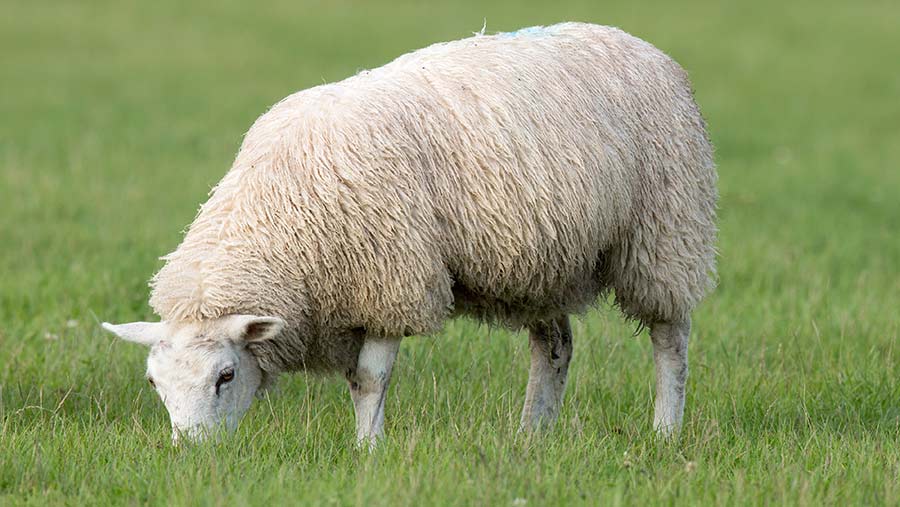Q&A: All you need to know about bluetongue disease
 © Tim Scrivener
© Tim Scrivener With bluetongue disease on the increase again in mainland Europe and with midge activity expected to gather pace as the weather warms up, Farmers Weekly spoke to Defra deputy chief vet Ele Brown to get the latest advice.
See also: Emerging livestock diseases – another unwanted climate change effect
What is bluetongue and what is the current situation?
Bluetongue is a notifiable disease which affects cattle, goats, sheep and camelids. It does not affect people or food safety, and meat and milk from infected animals are safe to eat and drink.
The virus is primarily transmitted by midge bites, but can also be spread through semen, ova, and embryos, as well as transmitted from mother to unborn offspring, or through the movement of infected animals.
If you suspect bluetongue in your animals, you are legally required to report it immediately to the Animal and Plant Health Agency (Apha).
There are a number of different strains, or serotypes, of bluetongue virus.
Apha and the Pirbright Institute identified the first case in the latest outbreak, serotype 3, in November 2023 through Great Britain’s annual bluetongue surveillance programme. Farmers will remember we had serotype 8 back in 2007.
Although there is at present no evidence of circulating virus, our robust disease surveillance procedures continue.
We are now entering the period where midges will be more active so I am urging farmers to remain vigilant and report any suspicions to Apha.

Ele Brown © Defra
What are the clinical signs of bluetongue?
The effects on susceptible animals can vary greatly – some show no clinical signs or effects at all while for others it can cause productivity issues such as reduced milk yield, or in the most severe cases it can be fatal.
Other clinical signs can include crusty erosions around the nostrils and on the muzzle, redness of the mouth, eyes, nose and skin, and discharge of mucus and drooling from mouth and nose.
Farmers should familiarise themselves with the clinical signs, noting they are likely to be more common in sheep than cattle, and contact their vet if they have concerns.
What can farmers expect to happen over the next few months? Do you know how bad this virus could become?
It is difficult to say exactly what might happen, but we are planning for a possible resurgence of the disease over the coming months as the weather warms and the risk of infected midges blowing over from northern Europe increases.
Farms close to the coast in counties along the east coast of England from Norfolk to Kent and along the south coast from Kent to Devon are at highest risk of incursion, and we will be proactively raising awareness with animal keepers in these areas.
We are modelling the risks and monitoring midge activity, and there are a number of approaches under consideration, which we are evaluating and discussing with industry.
Surveillance of susceptible animals and epidemiological assessments continue, and we are actively engaging with vaccine manufacturers on the development of BTV-3 vaccines for use in the UK.
Farmers should continue to be vigilant and monitor their animals frequently, and we will continue to ensure that keepers and businesses are kept up to date, and that questions and concerns are addressed promptly.
What should farmers be doing to be prepared?
Control of midges is difficult and, although there are things that can be done to reduce their spread, it is unlikely that the risk can be completely removed on any individual farm.
However, there are steps we can take to reduce the risk.
Midges often accompany animals as they move, so movement controls and restrictions for susceptible livestock in high-risk areas can minimise the risk of infected animals without clinical signs moving the disease between holdings.
When moving animals in a vehicle in these areas, farmers should consider applying insecticide to the vehicle as appropriate, in consultation with their vet.
All businesses should have a contingency plan for both responding to disease outbreaks on their premises and for if and when they might be in a disease control zone.
Contingency plans should include details of where animals are normally slaughtered to check that the abattoir is designated.
Farmers must also make sure both their livestock and land, including buildings and short-term lets, is registered with Apha, and that their contact details are up-to-date so we can locate animals in the event of an outbreak.
Strict rules on the movement of livestock from regions affected by bluetongue are already in place and animals imported from these regions must be accompanied by the relevant paperwork to show clearly that they meet certain conditions designed to reduce disease spread.
Is there a vaccine?
There are no authorised vaccines available for BTV-3 in the UK or Europe.
We are actively engaging with vaccine manufacturers on the development of a BTV-3 vaccine for use in the UK, but this will take time and is unlikely to be a viable option for this year’s high-risk period.
Should farmers be using insecticide to control midges?
Unless specifically directed to by an inspector or instructed to by the conditions of an official notice, declaration or licence, you are not required to take action to kill or control insects around your premises.
However, you may wish to consult your veterinary surgeon for advice on any protective steps you might take.
